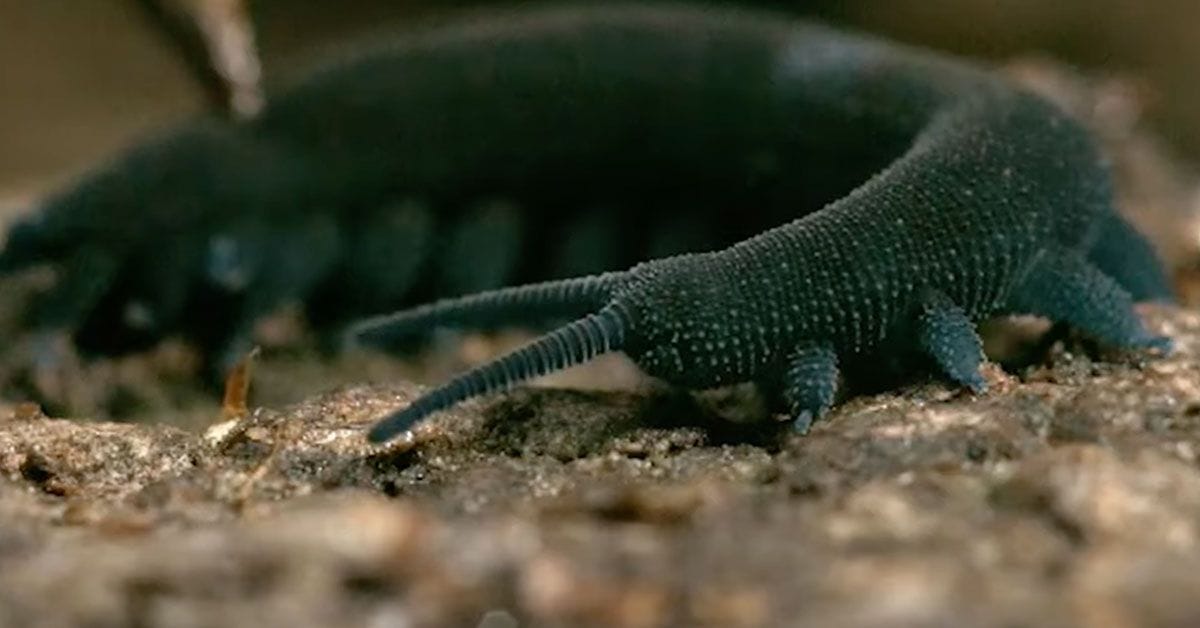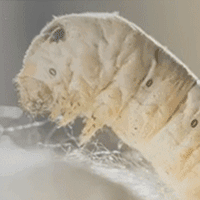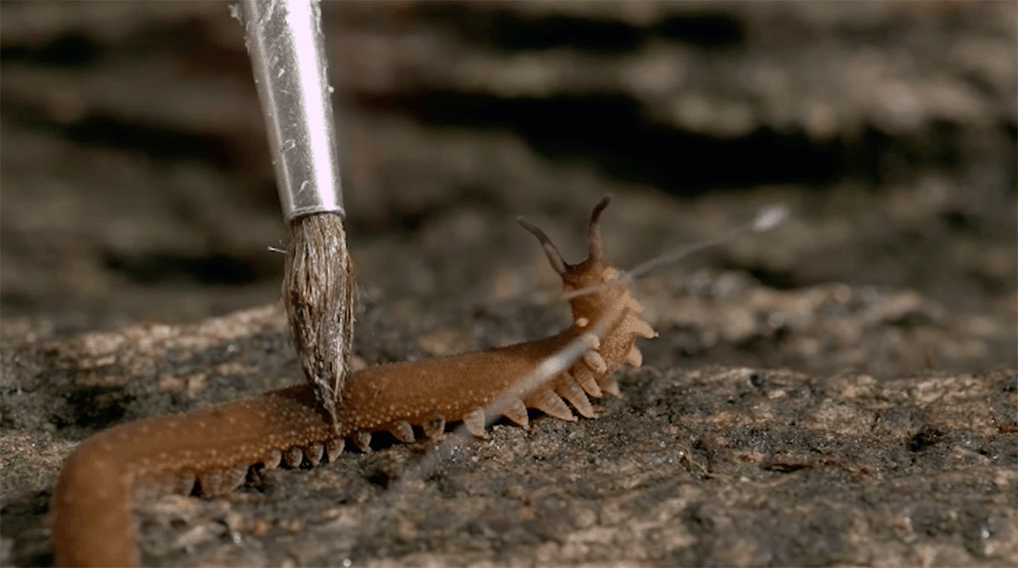New research dives in to the unique properties of velvet worm slime—and how it may hold the key to a new generation of more sustainable, recyclable plastics and glues.

The velvet worm is a soft, fuzzy-looking (and depending on who you’re asking, downright adorable) invertebrate with a very unique weapon. To defend themselves from predators and to also catch their own prey, velvet worms shoot a sticky slime from the sides of their heads, which quickly hardens into strong fibers. And now, chemists are one step closer to solving the mystery of how this slime works—and its potential role in developing more eco-friendly plastics and adhesives.
As velvet worm slime dries, the fibers develop a stiffness comparable to nylon, a widely used synthetic polymer. These slime fibers form almost instantly as prey pulls to escape—and the harder the prey pulls, the stronger the fibers become. But unlike nylon and most synthetic polymers, velvet worm fibers can dissolve back into their precursor proteins in water and be remade into new fibers. This means that velvet worm slime could one day be a valuable component of better, more sustainable plastics and glues that are much easier to recycle.
A team of researchers began investigating this unique material in more detail by first noting that velvet worm slime contains large protein molecules and high concentrations of phosphorus. Then, they collected slime from two distantly related species of velvet worm to determine how exactly phosphorus fits into the slimy formula.

The Secret of Spinning
Previous studies assumed the phosphorus was attached to the proteins as part of a phosphate group, where it is surrounded by oxygen atoms. These groups, commonly found in animals, are involved in a variety of important cellular operations.
However, the authors were surprised to find something a bit different when looking at the slime: instead of phosphate groups, they found lots of phosphonate groups, where the phosphorous bonds directly to a carbon atom instead of oxygen. They also discovered that sugar molecules link each phosphonate group to its protein, a type of protein modification that is very rarely seen in land-based organisms.
In their study, published in the Journal of the American Chemical Society (JACS), the researchers note that it’s possible that all velvet worm species produce phosphonates, and they think these structures may be crucial for understanding how the slime forms solid fibers. While more research is still needed, the authors are optimistic that this special slime may one day play a pivotal role in creating a new generation of more sustainable plastics and glues that are both strong and easily broken down in the environment.
Learn more about the research—and watch worm slime in action—in the video below, created by the ACS Science Communications Team:

